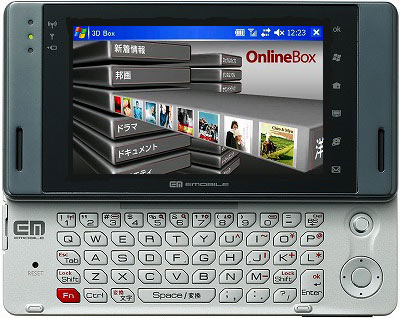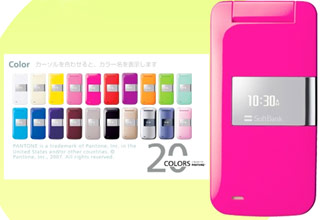Symbian Says BooHooForYou
 Symbian announced their 20 millionth handset sales milestone in Japan with a rather surprising Jekyl-and-Hyde campaign. First off, they ran a Fortune-500-style blitz – dubbed J20 – complete with CEO webcast and predictable press release – so far, so OK. If that was all they did, we’d certainly join in the chorus to congratulate them on a job well done. When any non-domestic entrant achieves 20 million sales of anything, much less ultra-cool Symbian smartphone installations, WWJ offers our heartfelt congratulations and more power to them.
Symbian announced their 20 millionth handset sales milestone in Japan with a rather surprising Jekyl-and-Hyde campaign. First off, they ran a Fortune-500-style blitz – dubbed J20 – complete with CEO webcast and predictable press release – so far, so OK. If that was all they did, we’d certainly join in the chorus to congratulate them on a job well done. When any non-domestic entrant achieves 20 million sales of anything, much less ultra-cool Symbian smartphone installations, WWJ offers our heartfelt congratulations and more power to them.
However, at the same time global HQ launched an akward attempt at what seems to be a viral ad. campaign – called BooHooForYou – with a dedicated website and anime themed video posted on YouTube. Since BHFY provides full English text and subtitles in the animation, the obvious target audience for this little stunt are folks outside Japan. The Japanese audio and English subtitles combined give viewers the distinct impression the site was made in Japan to poke fun at (lagging) European and American mobile markets.
Anyone who understands how Japan’s business and wider civil culture operates will tell you that remaining humble – especially when you otherwise have strong reason to brag loudly in public – is not only expected and practiced, but to do the opposite is highly insulting. Thus Symbian’s BHFY comes across as at least culturally inappropriate and at worst directly insulting.
WWJ editors have lived in Japan for several (many?) years, and we’ve watched closely to see how mobile industry players here build, market and protect their reputations and brand images; we can confirm that video comes across as far too condescending, childish and downright tragic in the way it portrays the Japanese as openly gloating “boo hoo for you.” (Subscribers login for the full rant.)


 On Monday 23 April NTT DoCoMo
On Monday 23 April NTT DoCoMo  A pleasant April Fool’s surprise for all WWJ regulars here today as we’ve finally moved our tired old website – circa 2003 – into the digital trash can. We have made a few changes, beyond the somewhat tricky migration from Nuke to Wordpress, with this new offering. The ‘tag cloud’ for keywords, ‘share this’ option (with easy article bookmarking) and ‘send to friends’ function, ‘related entries’ (below all posts), a mobile feed version and an improved archive structure should help you navigate the large amount of content WWJ now makes available. As the saying goes, you don’t realize how much stuff you have.. until you have to move it!
A pleasant April Fool’s surprise for all WWJ regulars here today as we’ve finally moved our tired old website – circa 2003 – into the digital trash can. We have made a few changes, beyond the somewhat tricky migration from Nuke to Wordpress, with this new offering. The ‘tag cloud’ for keywords, ‘share this’ option (with easy article bookmarking) and ‘send to friends’ function, ‘related entries’ (below all posts), a mobile feed version and an improved archive structure should help you navigate the large amount of content WWJ now makes available. As the saying goes, you don’t realize how much stuff you have.. until you have to move it!
 eMobile announced their debut package offering – complete with terminals, data cards and flat-rate HSDPA price plan – today at a Tokyo press conference with company representatives joined by notable industry partners including Paul Jacobs, CEO of Qualcomm, Darren Huston, CEO of Microsoft Japan, and Masafumi Matsumoto, representative director from Sharp. The upstart carrier’s founder, chairman and CEO, Sachio Semmoto (who was co-founder of DDI, which became KDDI), called their newly introduced Sharp EM-One smartphone, “the next-generation mobile broadband device” – which was “designed to deliver always-on broadband at a reasonable monthly flat-rate price.”
eMobile announced their debut package offering – complete with terminals, data cards and flat-rate HSDPA price plan – today at a Tokyo press conference with company representatives joined by notable industry partners including Paul Jacobs, CEO of Qualcomm, Darren Huston, CEO of Microsoft Japan, and Masafumi Matsumoto, representative director from Sharp. The upstart carrier’s founder, chairman and CEO, Sachio Semmoto (who was co-founder of DDI, which became KDDI), called their newly introduced Sharp EM-One smartphone, “the next-generation mobile broadband device” – which was “designed to deliver always-on broadband at a reasonable monthly flat-rate price.” SoftBank Mobile rounded out the Japanese operators spring handset announcement rush this week by announcing a new fleet of models – Flash site
SoftBank Mobile rounded out the Japanese operators spring handset announcement rush this week by announcing a new fleet of models – Flash site